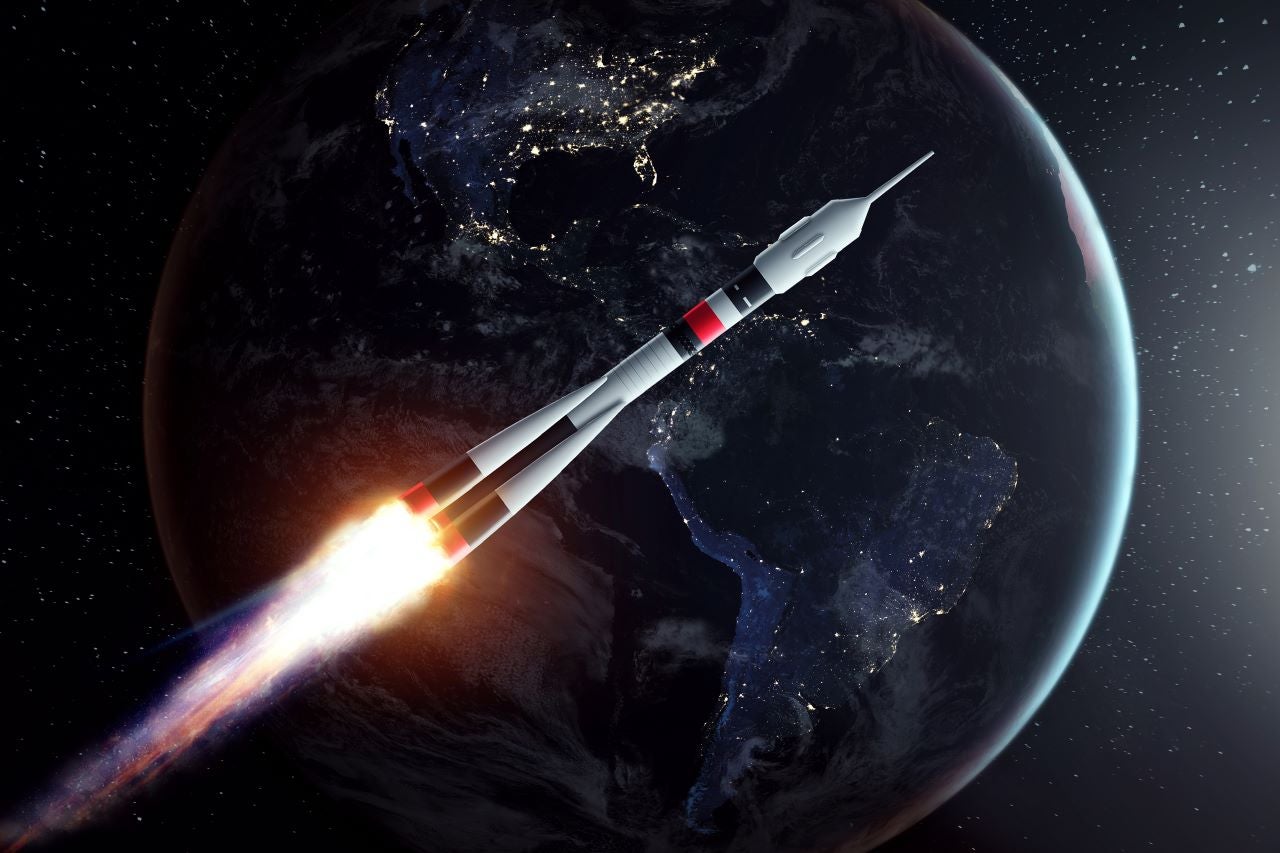Rival superpowers have been developing the means to extend their military power into Earth’s orbit almost as soon as the first artificial satellite, Sputnik 1, was launched on October 4th 1957. Satellites provide invaluable communications, navigation and reconnaissance for military operations, but in turn this incentivises a capability to deny enemy use of the same assets. Anti-satellite weapons or ASATs have been developed since the late 1950s, at first by the Soviet Union and US, but have since been tested by Russia, China and India.
Whilst most programmes eventually settled on various permeations of modified or purpose-built missiles, more ‘exotic’ proposals included laser systems, kinetic interceptors and variations of these pre-positioned in space. The Outer Space Treaty of 1967 prohibits placing nuclear weapons and military bases in space and on other celestial bodies, as well as vaguely defined ‘military manoeuvres’ – but there are no limits on conventional weapons. As the establishment of the US Space Force in 2019 shows, the use of this domain is growing fast and beginning to broach technologies and concepts once confined to science fiction. It may be time to appraise potential military uses of space beyond the common “satellite / anti-satellite” paradigm.
Whilst ASATs are an established part of military arsenals, there is also the possibility for weapons placed in space to attack targets on Earth, or intercept missiles that travel through space and high atmosphere. In 1974, the Soviet Union used its Salyut 3 military space station to successfully test-fire a 23mm cannon into deep space whilst disguising the program as purely civilian.
The US has frequently explored the concept of using low-Earth orbit to drop projectiles such as tungsten rods on targets below, using the kinetic energy of the fall instead of explosives. These would be incredibly difficult to defend against and could pinpoint-target hardened bunkers, bridges and other similar targets. Similar concepts could apply to space-based missile defence – as explored in the 80s with Ronald Reagan’s Strategic Defense Initiative or ‘Star Wars’ programme – or space-based lasers to blind or disable hostile spy satellites. With tensions rising in orbit in recent years, it may not be long before weapons are turned on one another in space itself.
The Space Force reported in February 2020 that it was monitoring Russian spacecraft Cosmos 2542 as it began to shadow an American spy satellite, at times approaching within 100 miles – relatively close for the scale of space. Before in 2017, the US claimed they had observed a similar Russian satellite deploying a smaller object and then launching a projectile. In July 2019 France initiated a space weapons programme to develop defenses including lasers and swarms of ‘nanosatellites’ to counter hostile objects in orbit.
See Also:
Another concept that intuitively seems far-fetched but is now maturing is point-to-point travel across Earth via rockets that briefly enter space but don’t achieve the trajectory needed for a full orbit – ‘sub-orbital’ spaceflight. This was originally explored in the more optimistic early spaceflight era in the 60s, never leaving the drawing board. But recent developments by private companies such as SpaceX in reusable, landing rocket stages have reawakened the idea.
How well do you really know your competitors?
Access the most comprehensive Company Profiles on the market, powered by GlobalData. Save hours of research. Gain competitive edge.

Thank you!
Your download email will arrive shortly
Not ready to buy yet? Download a free sample
We are confident about the unique quality of our Company Profiles. However, we want you to make the most beneficial decision for your business, so we offer a free sample that you can download by submitting the below form
By GlobalDataIn 2021, the Pentagon announced the Rocket Cargo Program, aiming to deliver 100t – equivalent to the load of a C-17 aircraft – anywhere in the world in under an hour using SpaceX’s in-development Starship. A five-year contract worth $102m was awarded to SpaceX in January 2022 and since then figures in the DoD have opined on using rockets for rapid logistics to transport everything from humanitarian aid, ammunition and vehicles and even to deploy personnel to react to events such as an attack on a US embassy – likely spurred by the US’s experiences in Benghazi in 2012. All these use cases should be treated with great caution. As the programmes of the Cold War show, many never advance further than concepts, or prove prohibitively expensive.
There is also a myriad of legal issues involved in more frequent use of rockets to hop across Earth, regarding the definitions of international and sovereign airspace. Some use cases are more feasible than others: using Starship as a logistic route to well-established facilities such as US bases in Europe is far more likely than dropping a rocket in the middle of a foreign country as a ‘quick reaction force’ for instance, which introduces massive challenges in landing, safety and reusability. Placing weapons in space will be highly provocative and could precipitate a rapidly spiralling arms race for destructive weapons in orbit, where a stronger likelihood of one nation attacking another’s satellite only produces a new potential flashpoint at a time where tensions run high.
Nevertheless, military presence in space is proliferating and private sector innovation in the industry is introducing new possibilities that states such as the US are unlikely to pass on. With space weapon development growing and humans planned to return to the Moon by 2024, international coordination on arms control and further treaties on the use of space are becoming more urgent










Related Company Profiles
SpaceX